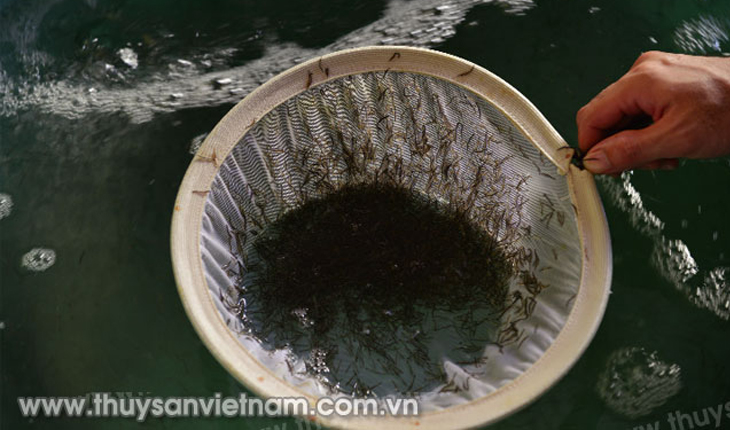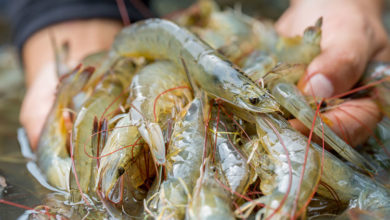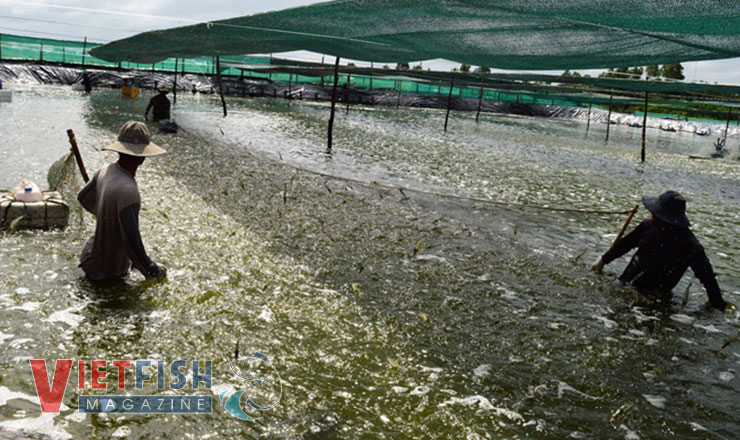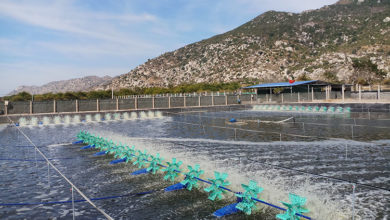New approach to farming giant river prawn
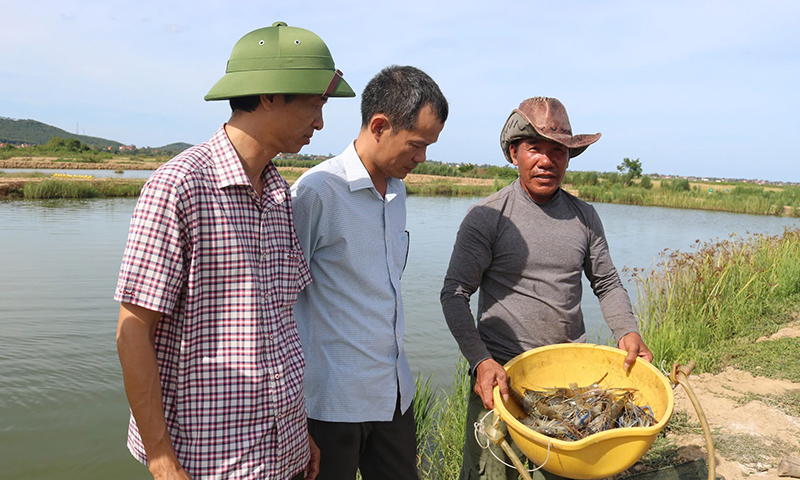
To boost productivity, lower production costs, minimize disease, and reduce environmental pollution while improving economic efficiency per unit area, the Center for Agricultural and Aquacultural Promotion (KN-KN) in Quang Binh has introduced a two-stage giant river prawn farming model in Van Trach Commune (Bo Trach). Early results indicate high economic benefits.
Quang Binh offers considerable potential and advantages for freshwater aquaculture. However, traditional farming mainly involves species such as carp, tilapia, and snakehead, which has led to relatively modest economic returns.
In recent years, the KN-KN Center has successfully tested all-male giant river prawn farming, yielding significant economic results. This success has prompted local farmers to expand the model through various methods: monoculture in earth ponds, intercropping with rice, and polyculture with fish.
Due to Quang Binh’s challenging weather conditions, shrimp are typically stocked at the beginning of the year when temperatures are still low, and harvesting often coincides with the rainy season, affecting survival rates and yield. Therefore, adopting a new two-stage rearing process is crucial to shorten the growing period, improve efficiency, reduce disease risks, and lower costs.
The two-stage giant river prawn farming model is being applied at Nguyen Van Vung’s farm in Van Trach Commune. The farm meets the model’s criteria: it has a separate water supply and drainage system, a pond covering 20-25% of the rearing area, adequate nursery and rearing ponds with strong embankments, a reliable water source, and a well-managed, accessible rearing area. Additionally, it includes a water aeration system and a backup generator.
Nguyen Van Vung reported that, previously, he and others used traditional methods, but environmental instability, uneven shedding, and frequent disease outbreaks led to scattered mortality and the need for constant disease prevention measures, including antibiotics. With the new model, households received 50% funding for seed purchases, 40% for feed, and biological products. The center also assigned staff to monitor the model weekly and monthly, verify seed and material quality and quantity, track environmental factors, and check growth rates to address issues promptly.
Results show high growth rates, with a survival rate of 80% in the first stage and about 60% in the second stage, and an average weight of 30 shrimp per kilogram. With an area of 9,800 m², the yield exceeds 3,000 kg, and profits surpass 200 million VND. Despite these achievements, challenges remain: aggressive feeding behavior leads to cannibalism if there are no hiding places or adequate food; local seed sources are lacking, leading to high transport costs and risks; and the market primarily serves domestic demand with no large-scale buyers.
Tran Thanh Hai, Director of the KN-KN Center, noted that the two-stage giant river prawn farming model is a new initiative and the first of its kind in the province. The model applies scientific and technical advancements to increase productivity, reduce production costs, limit disease, and enhance economic efficiency per unit area.
VFM



